The installation is composed as a low field. The red line separates the sand from the floor and reads as drawing extended into space. Within this frame, shallow relief plates set a rhythm across the ground. Unglazed and lightly glazed plates sit with unfired clay elements and selected fragments from earlier breakages. The differences in surface are deliberate. Dry edges keep a mineral record of air and time. Small height changes and even seams pace the reading across the field. Light is arranged to pass slowly across the plates so that shadow, not gloss, carries depth.
Broken elements are not removed. They are placed where their lines continue a flow begun elsewhere in the field. This choice comes from the year’s research into brokenness as method. A fragment records points of stress and collapse and therefore carries knowledge about the form. Keeping and placing it becomes a practice of care and repair rather than disposal. Archaeological display is a useful model here. Shards are presented as knowledge, not waste.
Installation notes
Summer Show
When the Water Left ceramic reliefs, unfired clay and sand hold small records of time. A red line draws a boundary on the floor to frame the ground as its own surface. Fragments are kept and placed with care. Light and spacing are used so that flow and residue can be read together. The work speaks quietly about loss, repair and what remains after water leaves.
Intent and reading
Viewers often described the work as coral reef taken out of water. I understand that reading because the cluster, the porous edges and the pale palette suggest sea life. My intention is different, though related. I am not illustrating coral. I am asking how matter shows time, how a surface holds a trace of flow, and how loss can remain visible without spectacle. The field is built to be read slowly as a record of what is left behind when water withdraws. It is about attention, care and the quiet states that sit between making and unmaking.
Context and references
The move from a drawn line to a field of objects relates to lines of practice where drawing becomes sculpture. Eva Hesse’s early works are a touchstone for how line, gravity and fragility can be kept active in space. The tolerance of chance and change recalls the reception of Duchamp’s Large Glass where cracks became part of the work’s meaning rather than damage to be erased. The piece also sits within broader conversations raised by Sarah’s prompts: precarity, fragility and time, nature and environment, and the incidental. These frames help me think about the Anthropocene without turning the work into a didactic statement. The climate crisis is present here as a condition felt through materials and placement rather than through text.



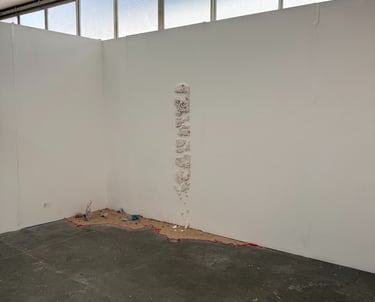
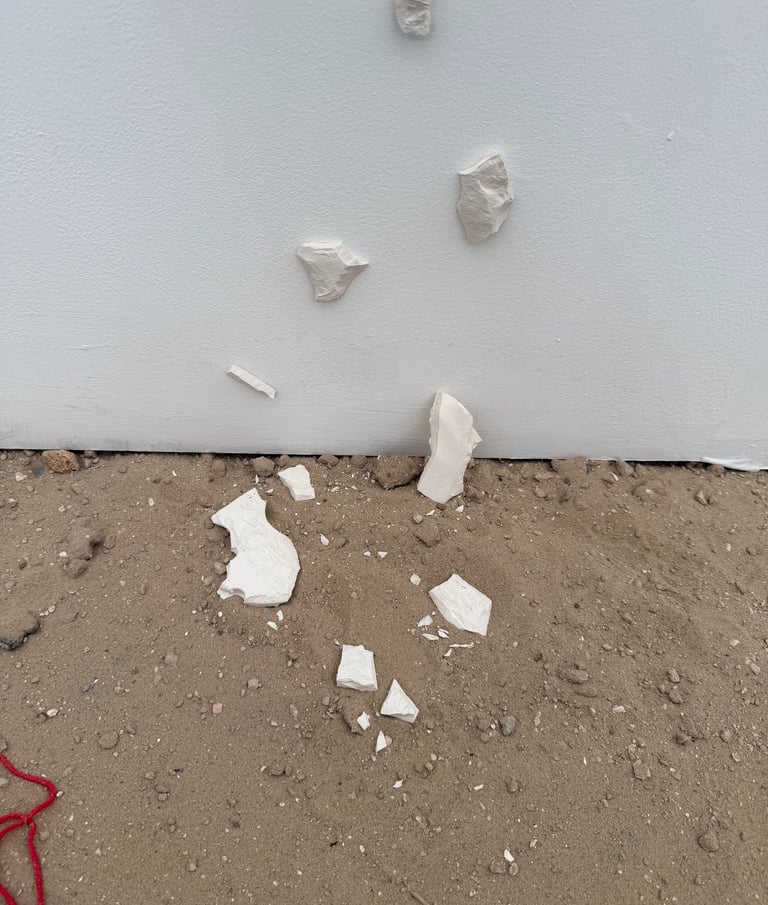

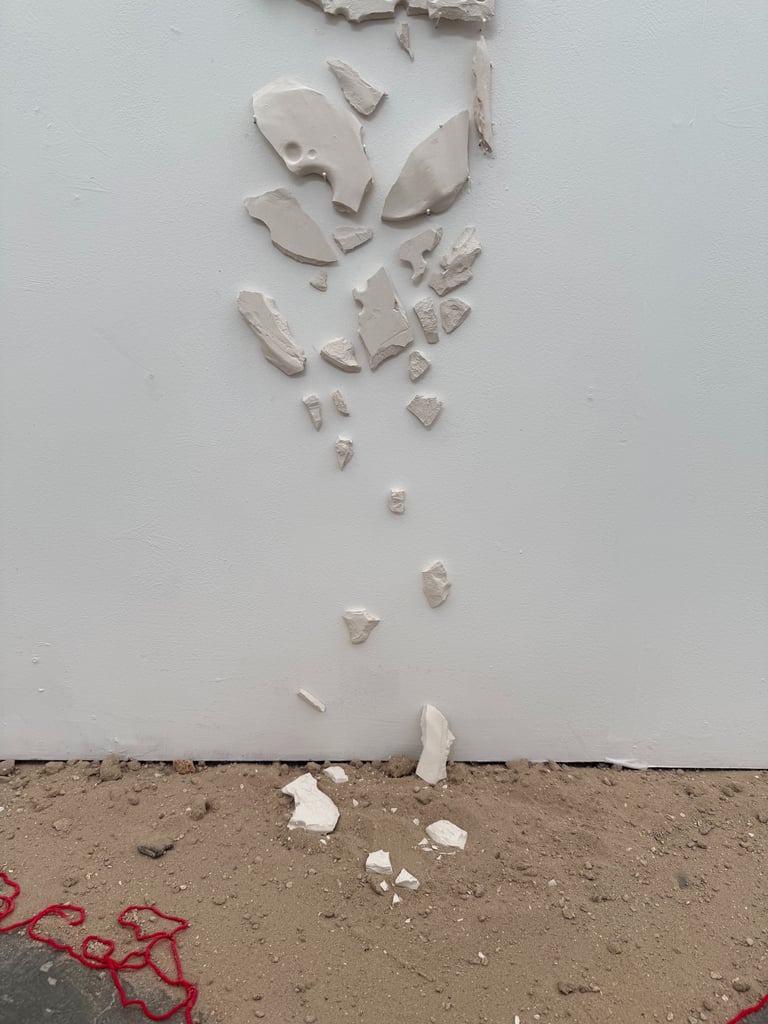

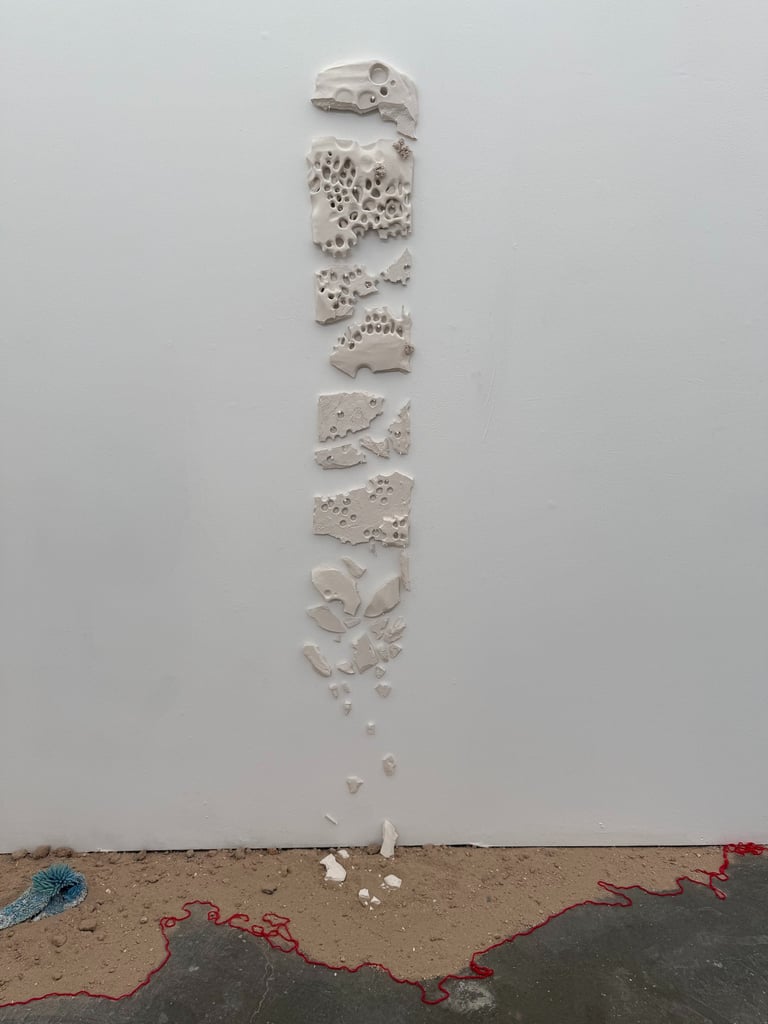

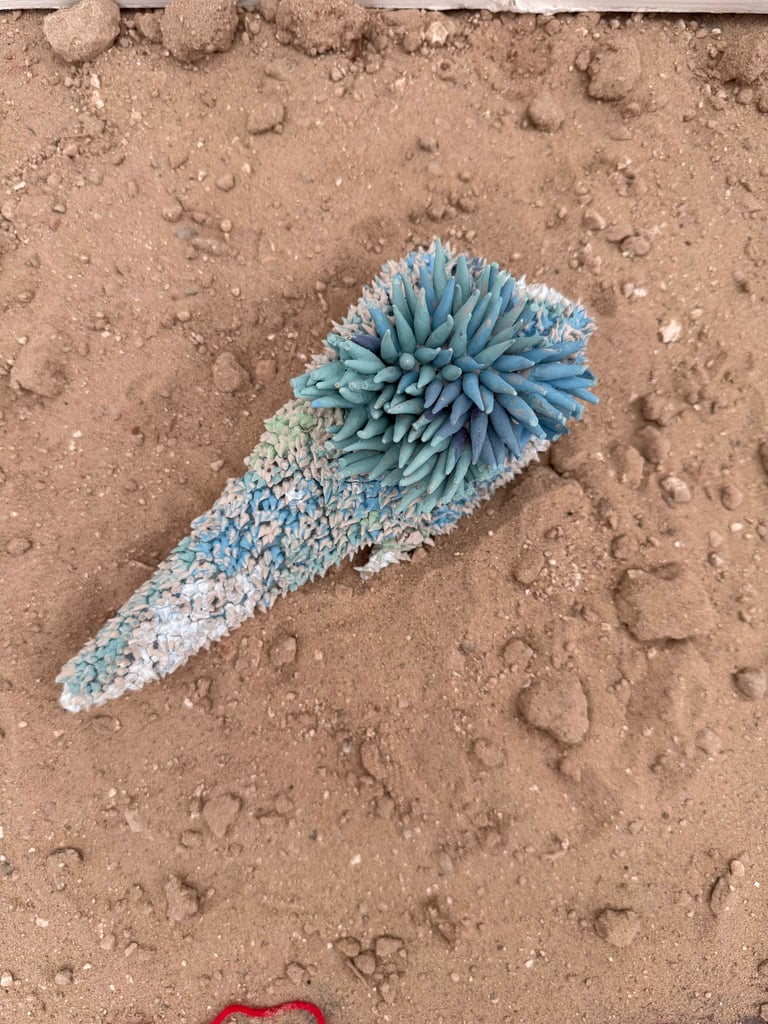



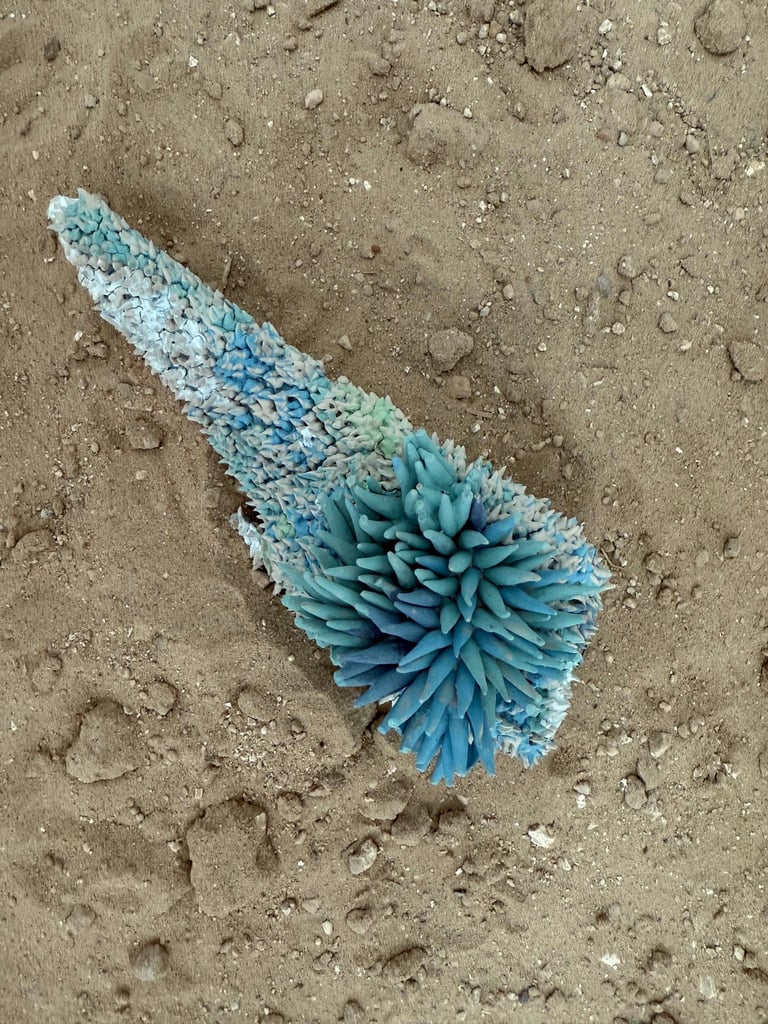

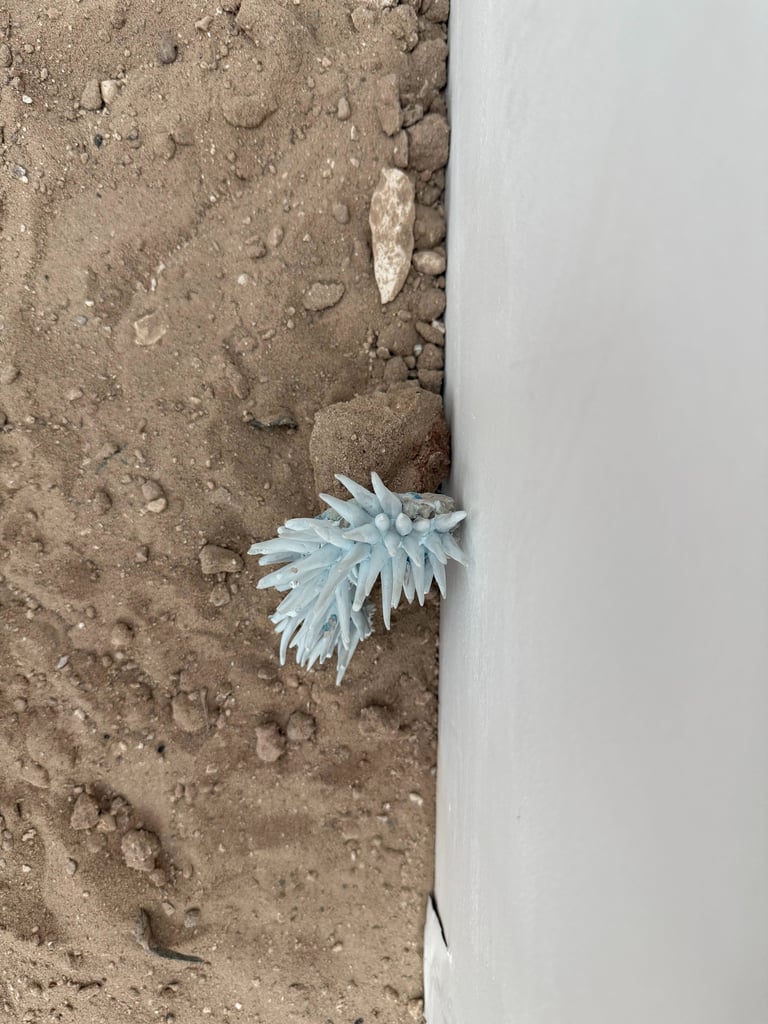

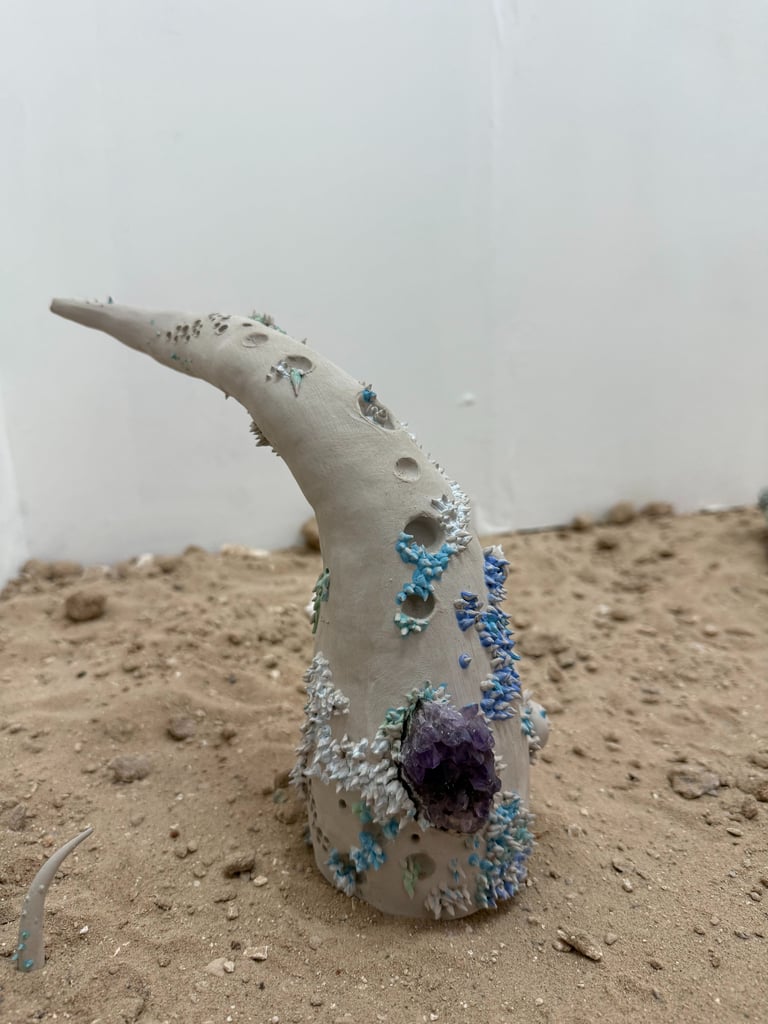

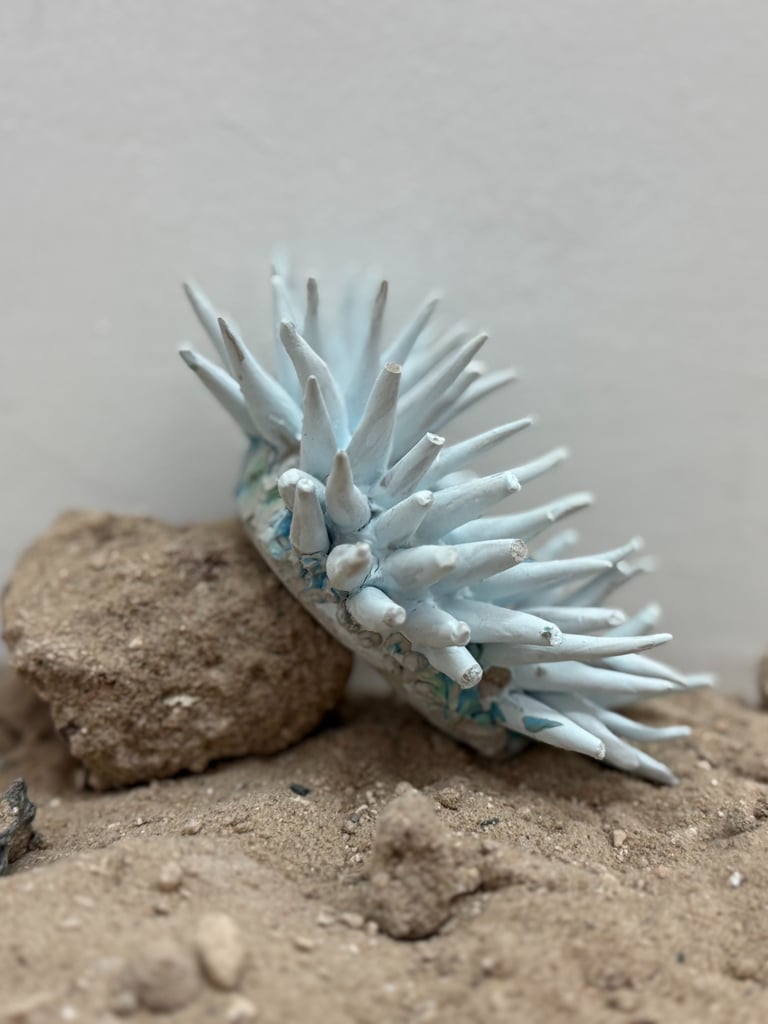

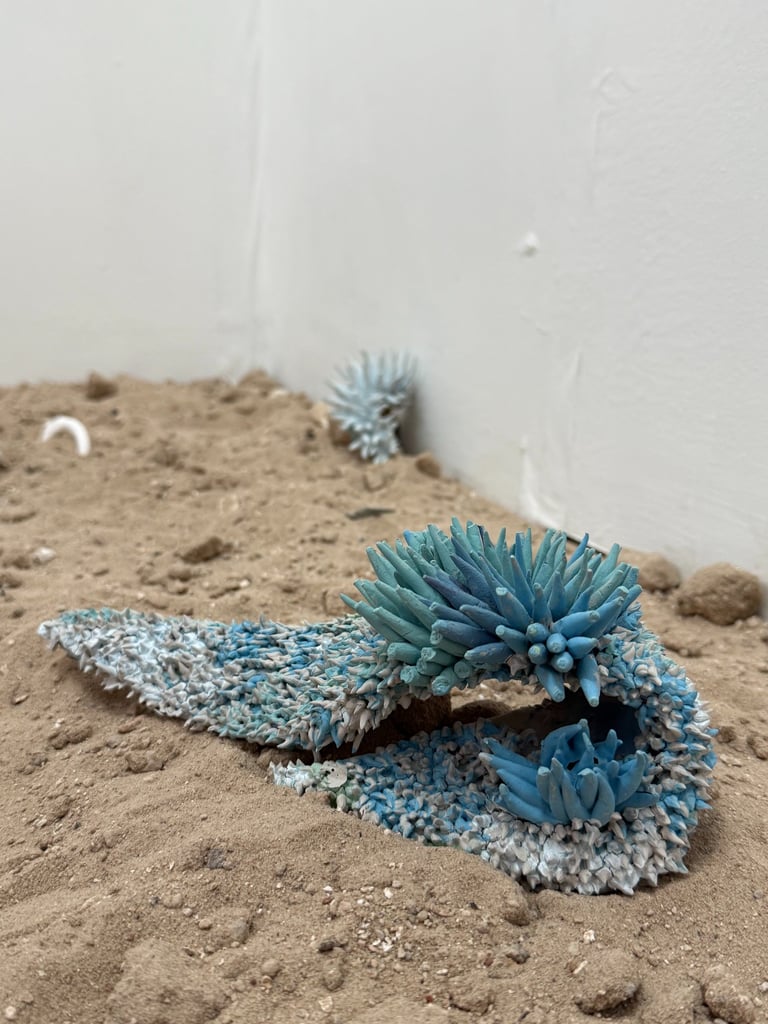

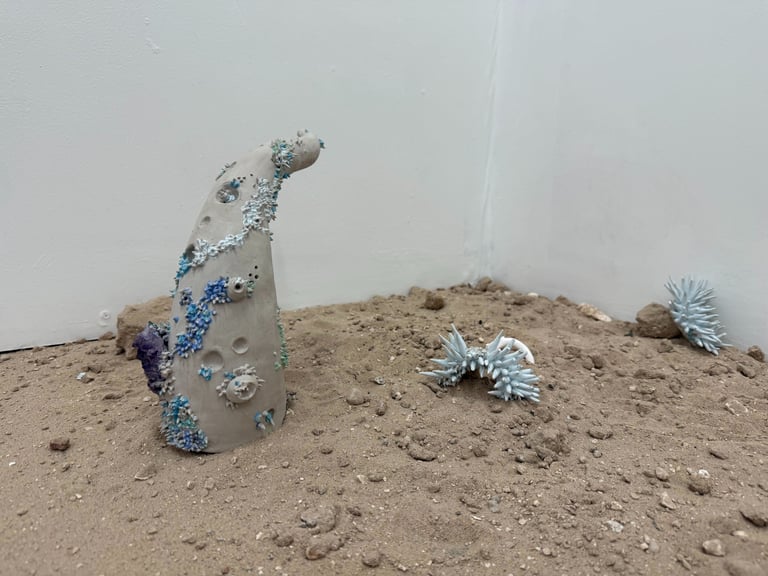


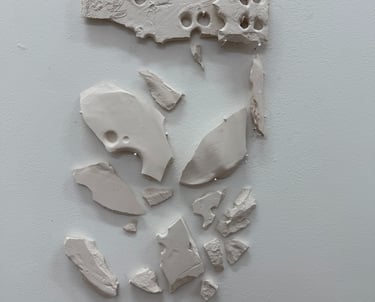
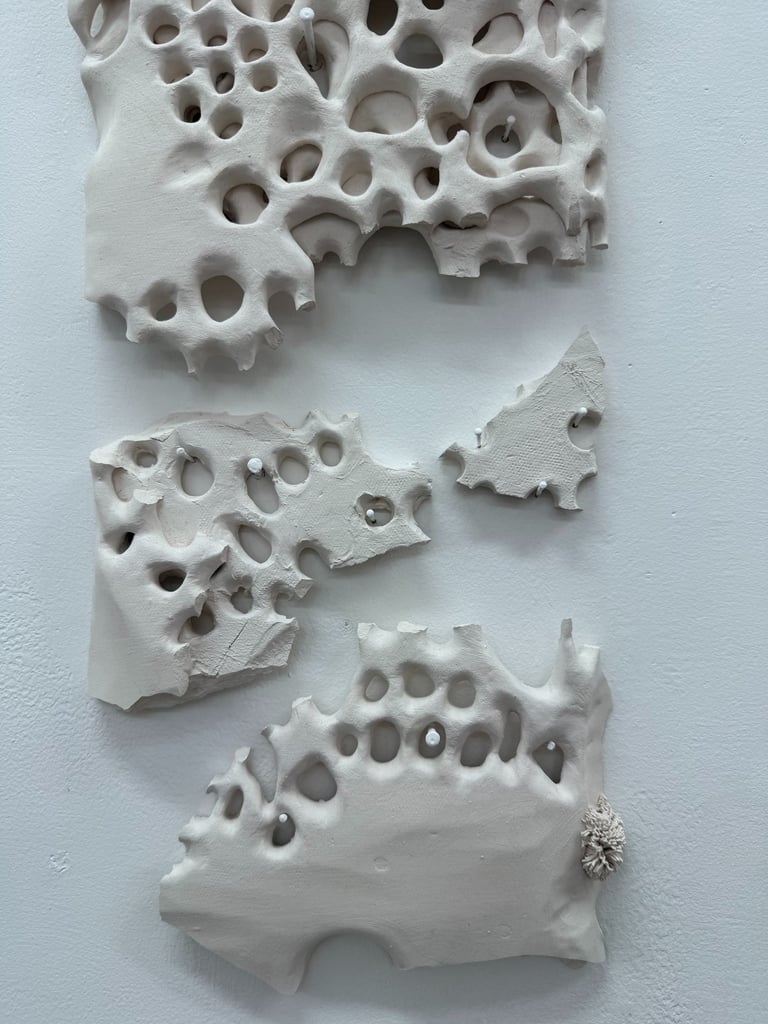

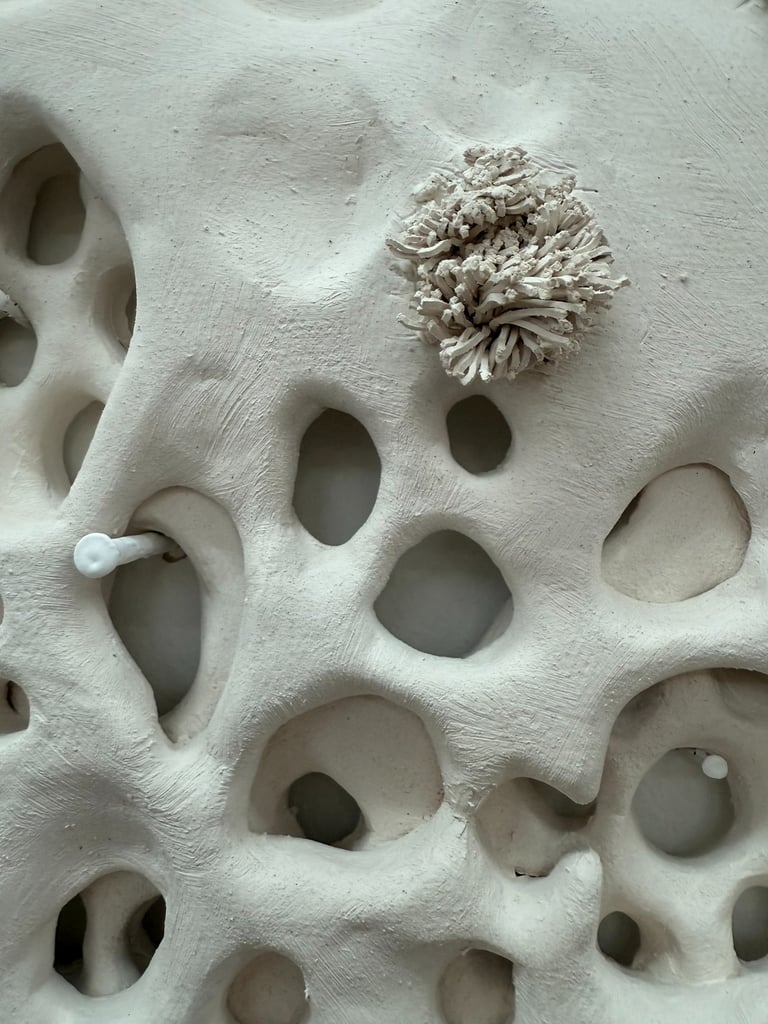

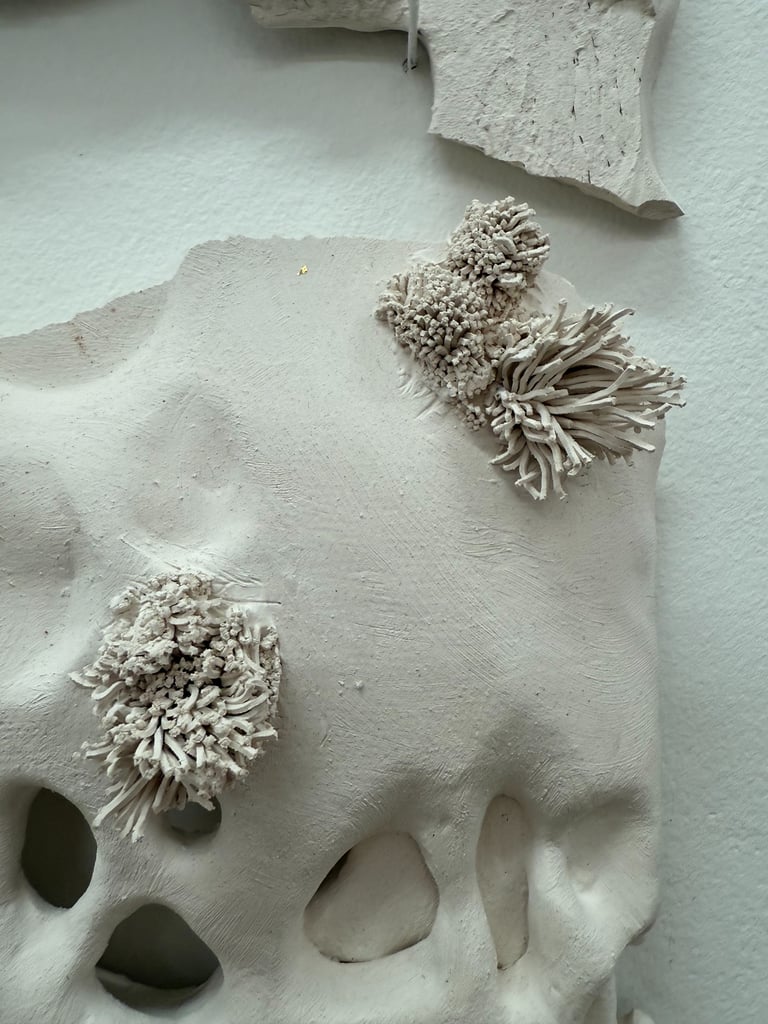

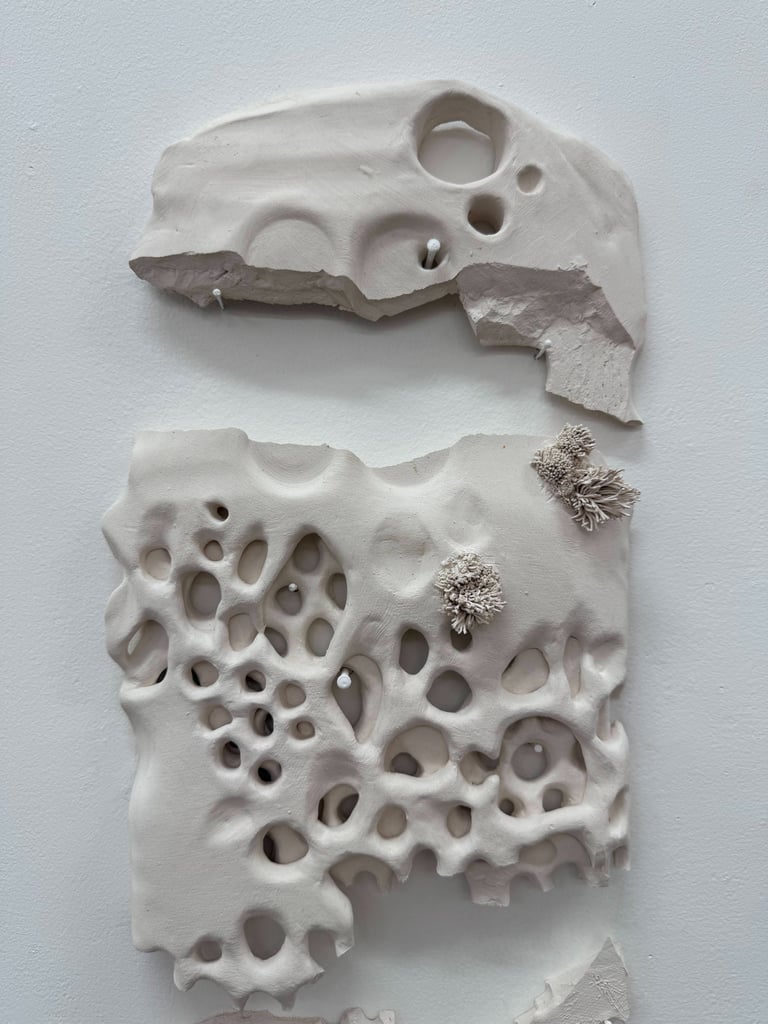

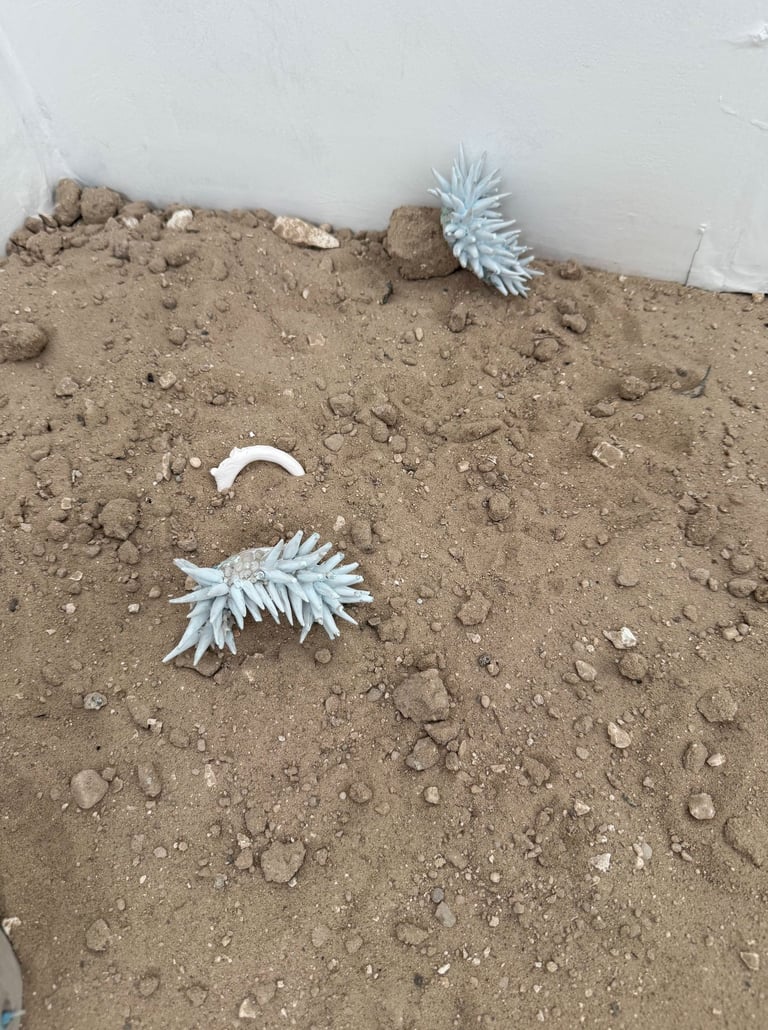

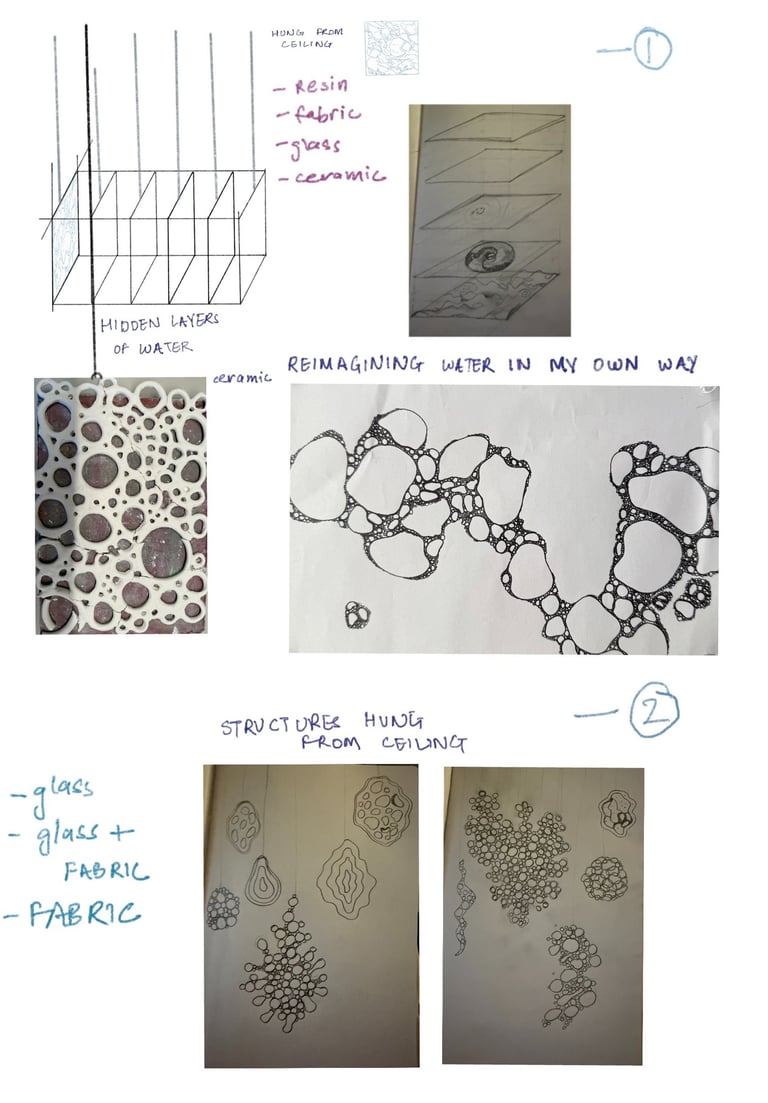


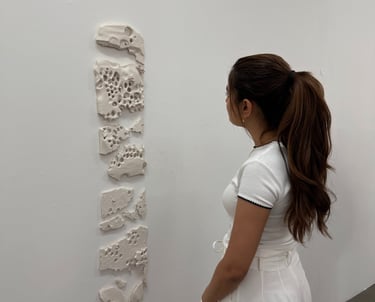
Context and references
The move from a drawn line to a field of objects relates to lines of practice where drawing becomes sculpture. Eva Hesse’s early works are a touchstone for how line, gravity and fragility can be kept active in space. The tolerance of chance and change recalls the reception of Duchamp’s Large Glass where cracks became part of the work’s meaning rather than damage to be erased. The piece also sits within broader conversations raised by Sarah’s prompts: precarity, fragility and time, nature and environment, and the incidental. These frames help me think about the Anthropocene without turning the work into a didactic statement. The climate crisis is present here as a condition felt through materials and placement rather than through text
Feedback that shaped the work
Gavin described the installation as very carefully orchestrated and read the passage from the red line to the sand and into the ceramic forms as a clear movement from drawing into sculpture. He noted that the practice is now formed from broken elements and that creation grows from destruction, with a quiet voice rather than a theatrical one. He suggested that the piece speaks about loss, melancholy and care, and that the approach of repair and re use is a significant development in your language. He encouraged testing a whole room scale and possibly sound in future, not as decoration but to extend the slow pacing already present.
Peers and visitors often read the clusters as remains or as a map. That distance between recognition and naming is important to the work. It confirms that the field can sustain more than one reading at once and that the line between image, site and residue can stay open.
What this work establishes for the practice
fragments function as records that carry form and time
spacing and seams are not decoration but the structure that draws the body through the work
dry ceramic edges and unfired clay keep a clear register of air, pressure and small changes in light
the ground can be read as a primary surface rather than a base for objects
monayadav.com